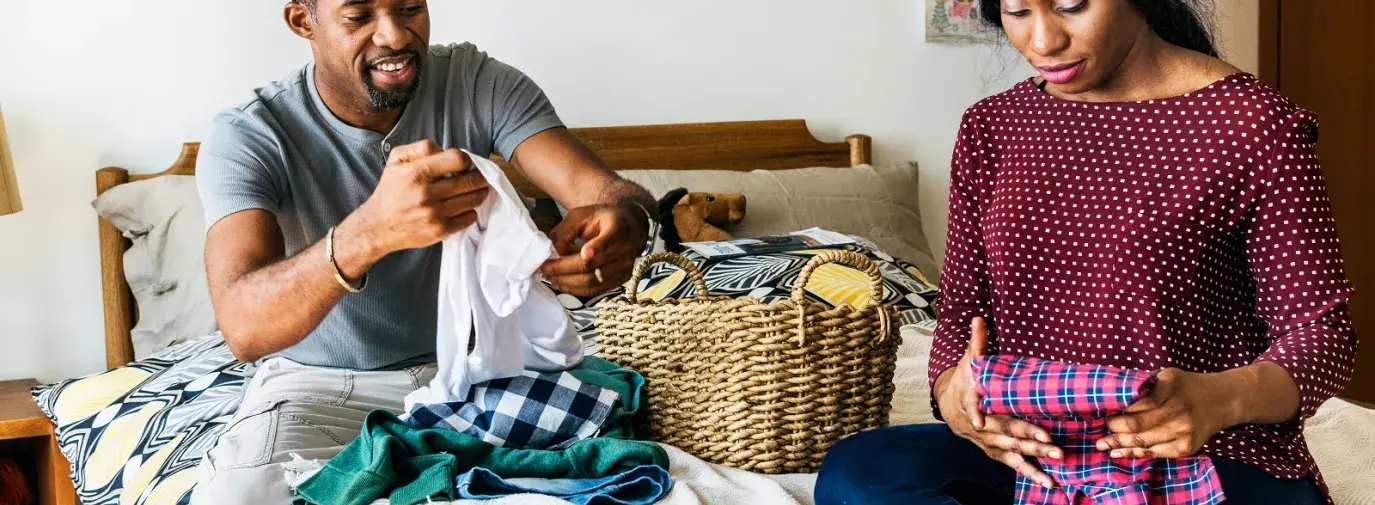
As your clothes tumble around in the washing machine, water washes away your shirt’s dirt, smells, and tiny pieces of microplastics. Microplastics, plastics less than 5 millimeters long, can be shed off clothes in the form of microfibers of non-biodegradable material such as polyester, nylon, acrylic, or spandex. When water empties from the washer and goes down the drain, microplastics head toward rivers and oceans. They have been found across the globe, sinking towards the Mariana Trench and climbing up to Mount Everest, all because we have plastic in our clothes.
“We are seeing microplastics showing up literally everywhere. You simply can’t avoid them,” Jay Sinha, founder of Green America’s member Life Without Plastic {GBN} explained.
A 2021 study published in IOP Science Conference Series notes that microplastics can cause serious harm to sea creatures, such as inhibiting growth, reducing food intake, and more. In terms of fish and other marine life, individuals should be concerned by microplastics’ ability to have worse and worse repercussions as they go up the food chain, says Paul Anastas, professor at the Yale School of the Environment and School of Public Health.
Scientists still don’t know the full extent of the impact of microplastic pollution on human health. Of course, all microplastics pollution is caused by humans, as the users of plastic.
Shedding from synthetic clothes in home washing machines make up about 35% of the global release of microplastic, coming from the synthetic fibers that make up 60% of global fiber consumption, according to 2017 estimations by the International Union for the Conservation of Nature.
We can all take steps to reduce opportunities for plastics to travel toward our oceans and harm marine ecosystems and human life. Microplastic pollution is a problem that can be solved if consumers and businesses play their part.
Managing Microplastics in Your Closet
Even if your closet is already full of clothes made with microplastics and synthetic microfibers, such as polyester, nylon, or spandex clothing, you can act against microplastic pollution.
Wash your clothes less and do full loads. Washing clothes less creates fewer opportunities for the fibers to be shed—try letting your clothes air out after wear and spot cleaning to reduce smells and trips through the wash. The Environmental Protection Agency explains that washing full loads causes less friction between clothes, reducing the number of microfibers shed. Meanwhile, a 2020 study done by researchers at the Newcastle Innovation Center and Northumbria University estimated that going from small to large loads about halved the number of microfibers released.
Buy a filter for your washing machine. More and more companies, such as Lint LUV-R and PlanetCare sell filters that specialize in capturing microfibers and stop many microplastics from leaking into waterways. One 2018 study from the University of Toronto found that the Lint LUV-R filter captured about 87% of microfibers shed each wash. One can also buy laundry bags or laundry balls that specialize in catching microfibers, such as those from Guppyfriend, Cora Ball, and Wolven.
Use a front-loading washer. Researchers at the University of California Santa Barbara found that front-loading machines had microfiber masses that were 7 times smaller than top-loading machines. This is likely occurring because of the central agitator in top-load machines that causes clothes to move more vigorously.
Filter your drinking water. This won’t reduce the pollution already in the water system, but will keep particles out of your system.
Alternatives to Synthetic Microfiber Clothing
There is no need for microplastic pollution. It is possible to create non-polluting fabrics.
Choose plastic-free fabrics. This includes organic cotton, wool, linen, and other natural fibers. These fabrics are easy to find and do not contain the synthetic microfibers that are shed in washing machines.
Many of Green America’s members work on producing plastic-free products and clothing. For example, Life Without Plastic {GBN} produces fabrics made out of organic cotton and laundry materials that reduce plastic use. Their lavender drying bag replaces microplastic-containing dryer sheets, can be composted, and is made from organic cotton. OOLOOP {GBN}, and others, sell a variety of clothes that come from natural and organic fibers like organic cotton and linen. Linen, silk, and wool can be particularly expensive to buy new, so look out for them at the thrift store, too.
Reach out to companies about alternative forms of plastic. When asked about solutions to microplastics, Anastas replied that “There are three steps that should be taken: design, design, design.” Design makes it possible to create plastics and fabrics that biodegrade and do not harm wildlife.
Write to companies and request that they do more to address microplastic pollution. Let them know that alternatives exist, and they should do their part to implement them.
If your closet contains synthetic materials, don't just throw them away! Wash them responsibly to fight the impact of plastic in clothes, then shop for more eco-friendly clothing in the future.
Updated August 2023







